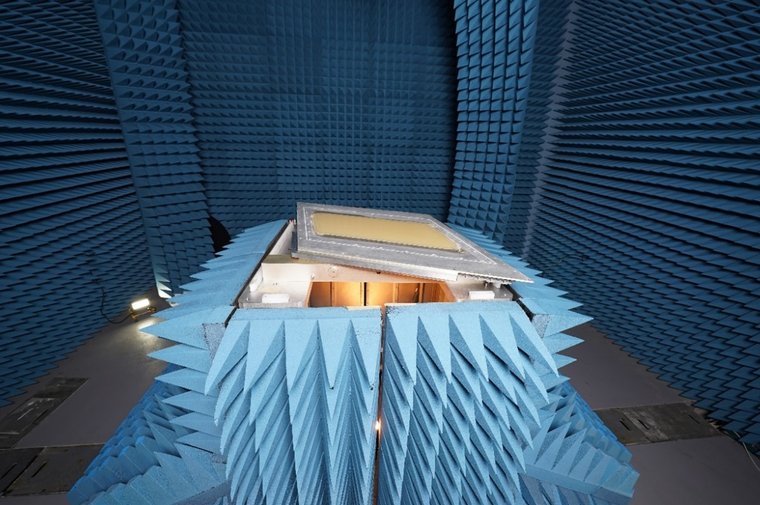Northrop Grumman completes test flights of new scalable sensor
Details
More Products & Services
Products & Services
Military Unmanned Systems Handbook
Shephard Media
The Military Unmanned Systems Handbook (Digital Download) is an international guide to the military UV industry and provides detailed information on air, ground and sea (surface & sub-sea) vehicles as well as subsystems. What's included: Unencrypted 390+ page PDF of equipment and supplier information Market summary
Defence Insight
Shephard Media
Some of the things people like you use Defence Insight for:
- Total addressable market sizing ($)
- Competitor analysis
- Cost analysis
- Market forecasting
- Growth identification
- Increasing closing ratio
- Increasing closing order value
- Estimating product potential
- Calculating sales forecasting
- Supply and demand analysis
- Total addressable market sizing ($)
- Competitor analysis
- Cost analysis
- Market forecasting
- Growth identification
- Increasing closing ratio
- Increasing closing order value
- Estimating product potential
- Calculating sales forecasting
- Supply and demand analysis
Shephard Plus Update
Shephard Media
Shephard Plus is updating in June 2018 with rich new capabilities, and is now one of the most cost-effective and valuable aerospace and defence market intell...
Description
Northrop Grumman has successfully completed dozens of test flights of its EMRIS sensor with new software deployed during flights as demonstration of the reconfigurable nature of the sensor.
EMRIS's fully digital Active Electronically Scanned Array (AESA) utilises technology from the Defense Advanced Research Projects Agency's Arrays on Commercial Timescales programme, combined with the government's open architecture standards.
By applying the flexibility of a digital AESA, EMRIS can perform multiple functions including radar, electronic warfare and communications, simultaneously.
As part of EMRIS' flights, Northrop Grumman demonstrated the ability to quickly leverage technologies developed for other programs to adapt multiple fielded capabilities into EMRIS.
The second EMRIS array is entering testing, and Northrop Grumman is in the process of demonstrating its scalable nature by fabricating two smaller EMRIS apertures for lower cost and size-constrained application demonstrations.
The company has not identified particular applications for EMRIS but the technology is compact enough to fit in a small UAS and is designed to be configurable enough to be part of future platforms involving a range of aircraft sizes.
As part of the integration and test phase, Northrop Grumman is demonstrating the ability to leverage technology developed for other programmes to adapt multiple fielded capabilities into EMRIS.
The sensor's design leverages commercial processes and materials, including the 5G tech base, driving down cost and increasing the quality and reliability of the components, according to the company.
Krys Moen, vice president, advanced mission capabilities, Northrop Grumman said: “Dozens of successful flights with EMRIS demonstrated the ability to reduce development timelines and lower programme costs by leveraging our partnerships with, and advancements across, all military services.”
EMRIS's fully digital Active Electronically Scanned Array (AESA) utilises technology from the Defense Advanced Research Projects Agency's Arrays on Commercial Timescales programme, combined with the government's open architecture standards.
By applying the flexibility of a digital AESA, EMRIS can perform multiple functions including radar, electronic warfare and communications, simultaneously.
As part of EMRIS' flights, Northrop Grumman demonstrated the ability to quickly leverage technologies developed for other programs to adapt multiple fielded capabilities into EMRIS.
The second EMRIS array is entering testing, and Northrop Grumman is in the process of demonstrating its scalable nature by fabricating two smaller EMRIS apertures for lower cost and size-constrained application demonstrations.
The company has not identified particular applications for EMRIS but the technology is compact enough to fit in a small UAS and is designed to be configurable enough to be part of future platforms involving a range of aircraft sizes.
As part of the integration and test phase, Northrop Grumman is demonstrating the ability to leverage technology developed for other programmes to adapt multiple fielded capabilities into EMRIS.
The sensor's design leverages commercial processes and materials, including the 5G tech base, driving down cost and increasing the quality and reliability of the components, according to the company.
Krys Moen, vice president, advanced mission capabilities, Northrop Grumman said: “Dozens of successful flights with EMRIS demonstrated the ability to reduce development timelines and lower programme costs by leveraging our partnerships with, and advancements across, all military services.”

Share
Recent Chats
Share via email
Future: handle WhatsApp here
Future: handle LinkedIn here
Future: handle Twitter here
SUBMENU HERE
Share via Chat
Copy Link



